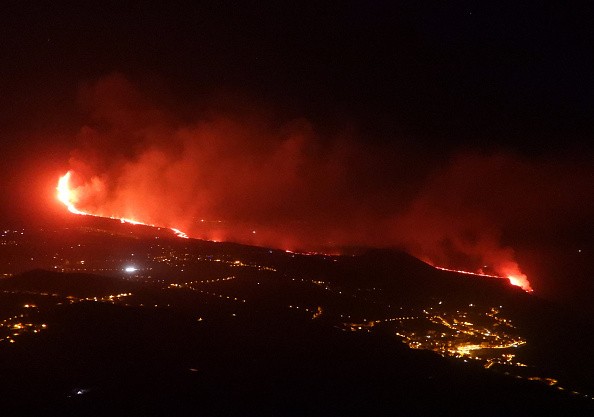Lava coming out from a volcano in the Canary Islands of Spain has improved its pace and is heading to the sea Tuesday, but scientists said estimating when the stream of molten rock - color black and red - would get to the shore is not possible.

Flowing Lava in La Palma Island
Officials said as of Tuesday morning, the lava had flowed on La Palma island within 875 yards (800 meters) of the Atlantic Ocean, nine days after the volcano erupted. When it finally gets to the sea water, the lava could prompt explosions and the emission of toxic gas.
By the afternoon, authorities said different factors dictated the unforeseeable rapid movement of the lava flow, including when it departed from a path over an earlier flow that had solidified. The river of cooled lava had assisted the flowing lava to move smoothly.
A technical director of the Canary Islands emergency volcano response department named Miguel Ángel Morcuende said: "The lava cools down as time passes and it meets uneven ground, which slows it down. And if it comes off the highway it was going along, that slows it even more because it spreads out wider."
A small hill and a congested area obstructed the lava flow, but the area of the shore is more level than the hills the lava has been moving from.
The Unpredictable Volcano
For days, authorities have been anxiously waiting for the time when lava from the eruption that took place on the 19th of September gets to the Atlantic, but the volcano has been unpredictable. After its intensity reduced on Monday, the volcano suddenly became even more explosive.
Officials said they don't anticipate lava moving at a slow pace to create a significant disturbance on the coast.
But a researcher at the Spanish Oceanography Institute whose name is Eugenio Fraile told Cadena Ser radio that those that will be inside a perimeter security when the flow reaches the ocean are only scientists putting on protective gear.
On Tuesday, the National Geographic Institute detected six earthquakes in the region the eruption took place, with the most powerful measured at 3.3 magnitudes.

Impact of the Lava Flows
La Palma is part of the volcanic Canary Islands which is an archipelago off northwest Africa and it accommodates around 85,000 people. At the island's broadest point it is approximately 35 kilometers or 22 miles long and 20 kilometers (12 miles) wide.
Lava coming from the eruption has damaged everything on its way, it has destroyed about 589 buildings and also 13 miles (21 kilometers) of roads on La Palma.
Currently, the lava is blanketing 637 acres (258 hectares) with the most affected area being farmlands, as per a European Union satellite monitoring agency.
The lava has destroyed both the homes and livelihoods of local people at the same time. One of the economic mainstays on the island is farming, together with tourism, but the lava and ash have endangered aviation, damaged crops and irrigation systems, and present a significant health risk to people close by.
For more news, updates about volcanic eruption and similar topics don't forget to follow Nature World News!
© 2025 NatureWorldNews.com All rights reserved. Do not reproduce without permission.





